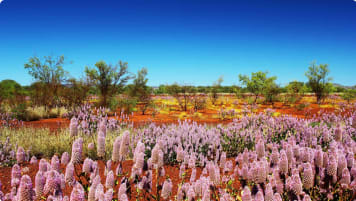The Simpson Desert, Australia
The Simpson Desert, Australia Sand dunes, desert flora, and splendid isolation: the Simpson Desert is one of the great wildernesses of outback Australia. Crossing the borders of South Australia, Queensland and the Northern Territory, the…
21 Jul 20 · 7 mins read

The Simpson Desert, Australia
Sand dunes, desert flora, and splendid isolation: the Simpson Desert is one of the great wildernesses of outback Australia.
Crossing the borders of South Australia, Queensland and the Northern Territory, the Simpson Desert covers a vast 170, 000 square kilometres, an area six times the size of Belgium.
The Simpson Desert is noted for having one of the world’s most extensive sand dune systems. In total, there are more than 1100 dunes, running north-north-west to south-south-east across the desert, some reaching up to 200 kilometres long. In the west, the dunes are only around 15 metres high, with around 4-6 per kilometre. Further east, dunes reach heights of 40 metres, separated by swales (inter-dune valleys) that are half a kilometre or more wide. They are made up of sand blown in from the flood plains and salt lakes – including Lake Eyre – bordering the south and east of the desert. There are 11 major dune systems, and nine minor ones, each with distinct characteristics – height, length, width, crest shape, vegetation, and the nature of the swales.
The Simpson Desert receives only an extremely unreliable rainfall of around 130 mm per year. However, during certain seasons heavy rains have the potential to flood the generally scrubby Finke River. Cecil Madigan, whose 1939 expedition through the desert was stranded due to heavy rain, described it as ‘ten inch or nothing country’. After rain, waters from the Simpson flow across more than 1.3 million square kilometres of central Australia, but none pass through the desert’s heart.

The periodic flooding means that, unlike international deserts such as the Sahara, the Simpson is surprisingly rich in flora and fauna. Mulga are common, while spinifex grows on the dune slopes. After showers the desert is covered with wildflowers, yellow daisies, billy buttons and parakeelia. Coolabah trees line the flood plains of desert creeks.
The Simpson Desert is home to 180 birds, 92 reptile species, and up to 44 mammals. Native mammals found in the area include the tiny, carnivorous mulgara, which gets the moisture it needs from its diet; the bilby, once common across central Australia but now confined to the deserts; and the kowari, a burrower which makes and modifies holes across the desert. Birds seen include cockatoos, brown falcons, and barn owls. Near the artesian bore of Purni Bore, an isolated wetland has emerged, where over 35 species of birds, including several waterbirds, have been spotted.
Incredibly, the desert was home to Aboriginal people for over 5000 years. A number of peoples lived in the Simpson, including the Wangkangurru, Arabana, Karangura, Ngamini, Diyari, Eastern Arrente, Lower Southern Arrente, Wangkamadla, and Jeljendi peoples. They tended to concentrate around mikiri, or wells found in depressions between sandhills, some as deep as 7 metres, giving access to freshwater soaks. People had an extensive knowledge of the location of these wells, and often dug deep in order to locate water.
Aboriginal people in this area were hunters and gatherers. They cooked bread and seed-patties from the roots of the nardoo (Marsilea drummondii), pigweed (Alzoon quadrifidum), and several native grasses, and hunted birds and mammals. They traded extensively both to the north and south, with ground-edge axes coming from quarries in Queensland and grinding stones and ochre from the Flinders Ranges, South Australia. Stone implements can sometimes be seen across the desert – please be respectful, and do not disturb them.
However, the desert remained something of a frontier for white settlers in Australia until the early 20th century. In 1845, the explorer Charles Sturt was attempting to find the ‘inland sea’ when he became the first European to visit the Simpson Desert. Crossing Sturts Stony Desert with a small party on horseback, he followed Eyre Creek (which he named for explorer Edward John Eyre) and then struck westwards into the desert. Near the present border between Queensland and the Northern Territory he was forced back by the endless horizon of sand ridges that stretched before him. As he wrote in his journal:
Ascending one of the sand ridges I saw a numberless succession of these terrific objects rising above each other to the east and west of me. Northwards they ran away from me for more than fifteen miles, with the most undeviating straightness, as if those masses had been thrown up with the plumb and rule.
After Sturt, most explorers skirted the desert. In 1886, David Lindsay, assisted by a white station owner and an Aboriginal guide, took camels from Dalhousie Springs to the Queensland/Northern Territory border and then returned to Dalhousie. Lindsay was able to find water thanks to local Aboriginal people, who brought him to wells scattered through the southern and eastern parts of the desert.
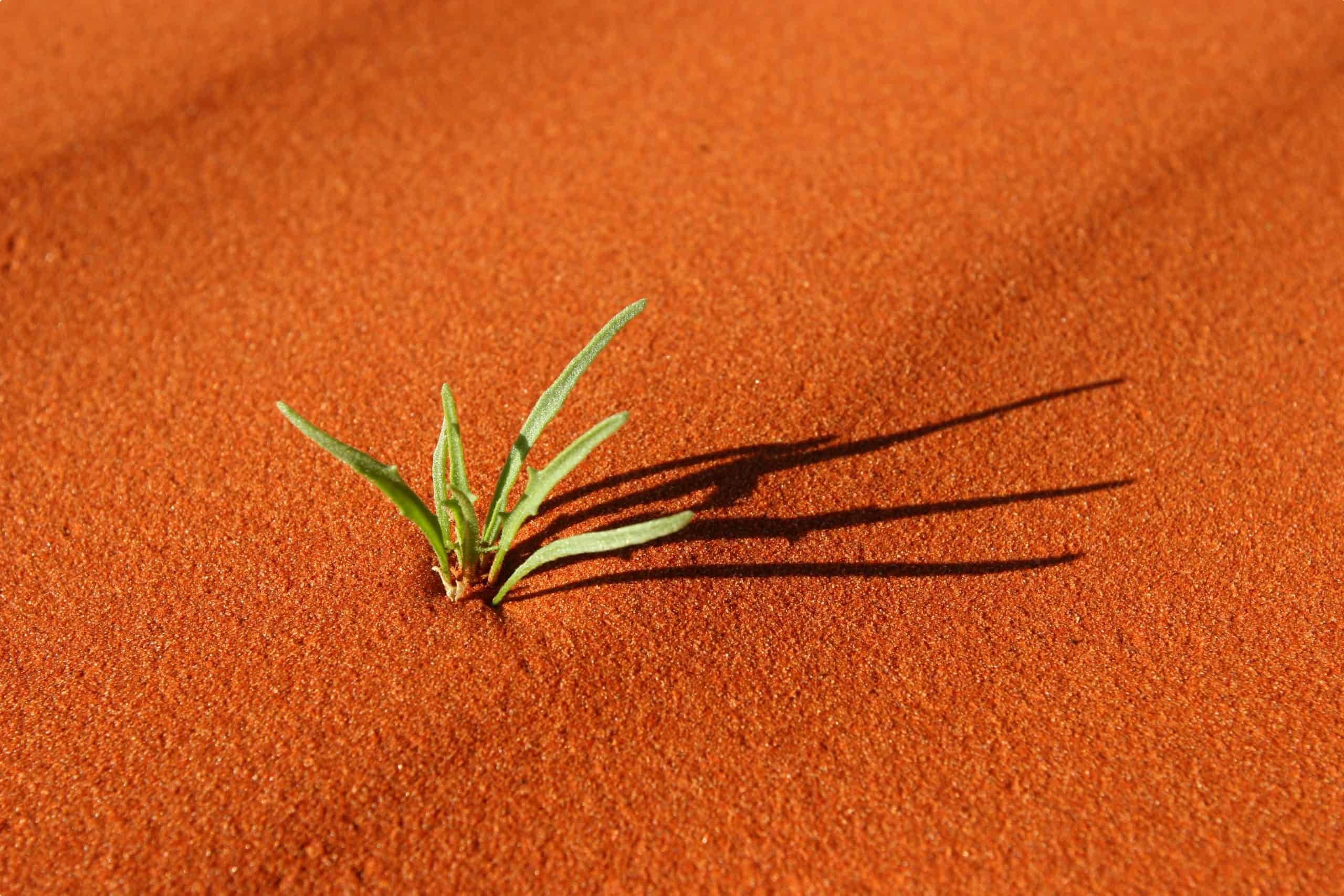
In 1929, the geologist Cecil Madigan flew over the desert, naming it after the Adelaide philanthropist Allen Simpson, president of the South Australian branch of the Royal Geographic Society of Australasia.
Seven years later, the first crossing of the desert by a European was made by the local bushman Ted Colson, who was accompanied by Peter Ains, an Aboriginal guide, and five camels. The successful crossing and return covered more than 900 kilometres of unknown country. In 1939, Madigan returned to the desert, leading a scientific party of eight men on camels from Andado to Annandale. Between the Hale River and Eyre Creek, the party crossed 626 sand ridges, gaining much valuable data on the desert ecosystems.
Today, thanks to greater tourism and awareness of the fragility of desert landscapes, large portions of the Simpson Desert are protected, with Witjira National Park centring on Dalhousie Springs to the west, and the Simpson Desert Regional Reserve and Munga-Thirri Simpson Desert Conservation Park stretching from Witjira to the Diamantina River. The Simpson Desert National Park occupies the south-western corner of Queensland.
Most expeditions crossing the Simpson Desert cross west to east, because the sand ridges, steeper on their eastern sides, are easier to cross that way. Madigan’s starting point was Old Andado Station, 250 kilometres south-east of Alice Springs. Though a new homestead was built in 1960 by the station’s owners, the old homestead is now a living museum of the pioneering era. The buildings – of acacia and grey corrugated iron – reflect the need to use easily available resources. Visitors can tour the associated meathouse and saddle shop to learn about pastoral life in the 1910s.
To the south of Old Andado is Mt Dare, which is (with Oodnadatta further south), one of the last places fuel can be obtained before the desert crossing. After this, the dunes begin, smaller and more frequent in the west before becoming taller to the east. On the way, stop and see the Approdinna Attora Knolls, two low hills of white gypseous rock, an important landmark among the sanddunes and saltpans. To the south of the knolls lies Wolporican Soak, a major source of water for the Wangkangurru people, the traditional custodians of the land here.
To the south of the desert, you’ll find a number of dry salt lakes. These ephemeral lakes fill during rare floods, then evaporate, thanks to the harsh desert climate (which reaches over 50 degrees in winter).
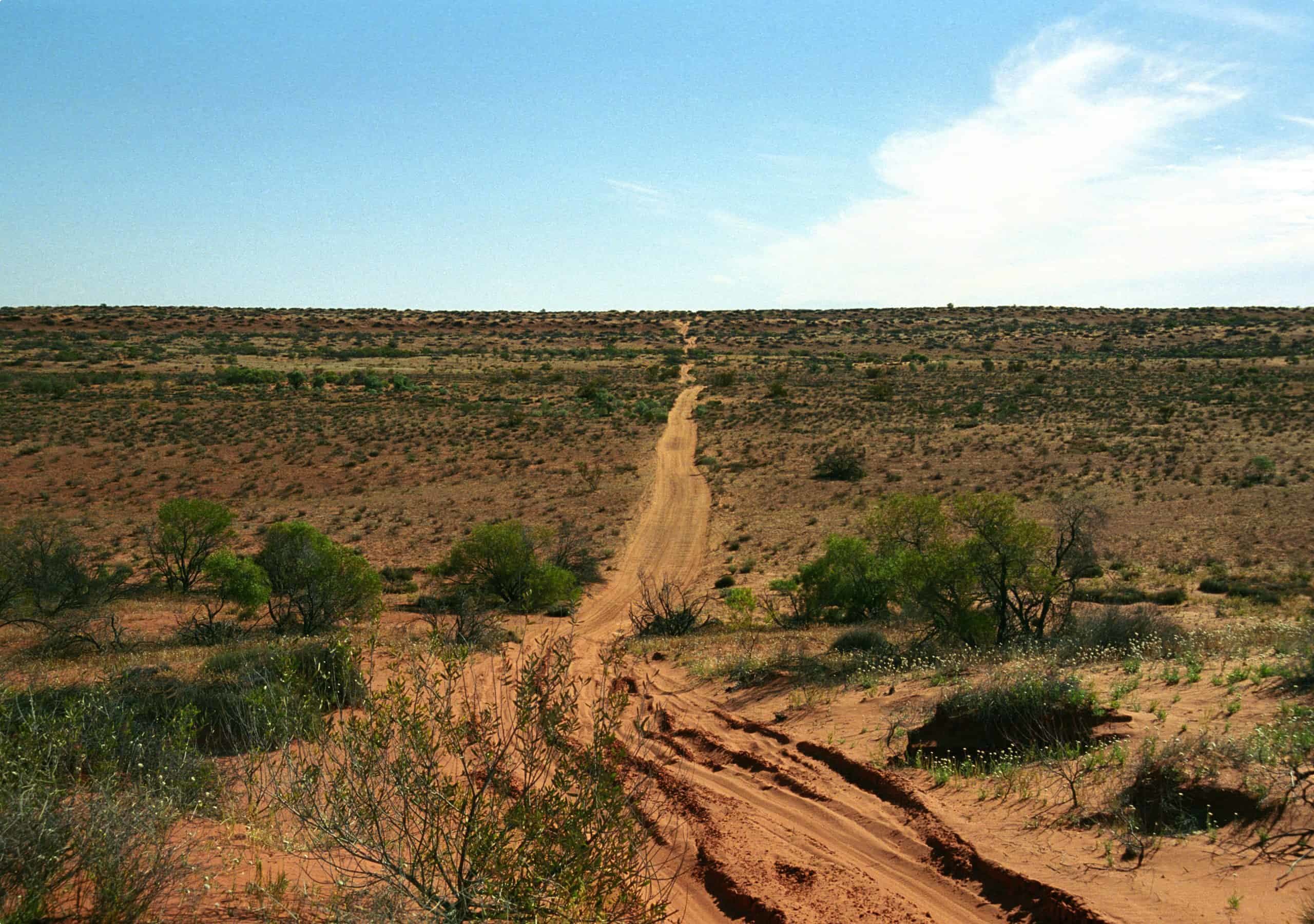
A day beyond the salt lakes is Warburton Creek, the waters of which mark the desert’s south-eastern boundary. To the north, Peoppel Corner marks the spot where South Australia, Queensland, and the Northern Territory meet, 115 kilometres south of the desert’s geographical centre, and 135 kilometres west of Birdsville. The place was first marked by surveyor Augustus Poeppel in 1880, and was barely visited until 1960, with the takeoff of desert tourism.
A day north-east from Poeppel Corner, straggling Eyre Creek marks explorer Charles Sturt’s route through the desert in September 1845. Nearby Annandale was established as a cattle station a generation after Sturt’s expedition by Patrick Drinan, who named the estate after his holdings in Gladstone. The property was bought in 1896 by ‘Cattle King’ Sir Sidney Kidman. The station was struck by drought in 1911 and 1914-16, leading to the deaths of over 10, 000 cattle. Kidman sold the property – along with a number of his Channel Country properties – in 1918. Today, the homestead lies abandoned, looming over the desert.
Finally, you’ll encounter the last vestige of the Simpson Desert: Nappanerica Sand Dune, more commonly known as ‘Big Red’, a 40-metre high dune said to be the desert’s highest. From here, it’s 33 kilometres to Birdsville, a warm shower, comfortable bed, and drink/meal at the iconic Birdsville Hotel.
Odyssey Traveller visits the Simpson Desert as part of our tour of the Outback, Broken Hill and ‘Back. Passing through some of the most remote territory of the Australian outback, our tour begins in Broken Hill, the capital of the outback, before heading to the mining town of White Cliffs and the Menindee Lakes. We then head to Innaminka on the Strzelecki Track, following in the footsteps of explorers Burke and Wills, before reaching Birdsville. From here we take the iconic Birdsville Track to Marree, passing through the heart of Australia‘s red centre.
Travellers with a passion for the outback may also be interested in some of our other tours. Our tour of the Flinders Range and Wilpena Pound takes a scenic flight over Lake Eyre and the quintessential Australian outback town of Coober Pedy. We also have a outback tour of Kakadu, Arnhem Land, and Litchfield National Park, and a trip to Outback Queensland, including a visit to the Australian Age of Dinosaurs. Another outback experience takes you to the remote Kimberley, where we pass through landscapes of great beauty and visit ancient Aboriginal rock art.
If an outback adventure isn’t for you, you may be interested in our other Australia tours, including our guided tour of ‘Marvellous Melbourne‘, or our tour of colonial Tasmania.
Odyssey Traveller has been serving curious mature and senior travellers since 1983. Our travel experiences are designed to give you an in-depth experience of our destination, led by an experienced tour operator/tour guide. We move in small groups, of between 6-12, and cater for a range of ages from 55 to travellers in their 80s and 90s! If that sounds like you, click here for more information.

Articles about Australia published by Odyssey Traveller:
- The Kimberley: A Definitive Guide
- Uncovering the Ancient History of Aboriginal Australia
- Aboriginal Land Use in the Mallee
- Understanding Aboriginal Aquaculture
- Mallee and Mulga: Two Iconic and Typically Inland Australian Plant Communities (By Dr. Sandy Scott).
- The Australian Outback: A Definitive Guide
- The Eyre Peninsula: Australia’s Ocean Frontier
- Archaeological mysteries of Australia: How did a 12th century African coin reach Arnhem Land?
- Ancient Aboriginal trade routes of Australia
For all the articles Odyssey Traveller has published for mature aged and senior travellers, click through on this link.
External articles to assist you on your visit to Australia:
- Munga-Thirri–Simpson Desert Conservation Park and Regional Reserve
- Driving across the Simpson Desert: How to cross the world’s largest sand dune desert
- Know before you go: Simpson Desert
- Indigenous ranger’s quest to preserve Simpson Desert knowledge and 60,000-year-old history of his people
- 10 Deserts Project
Related Tours
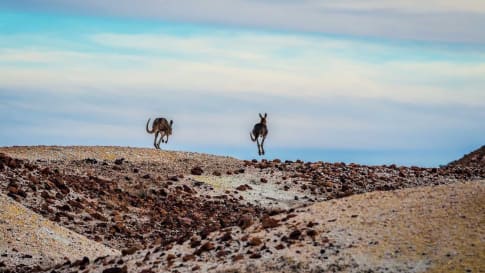
13 days
Mar, OctSmall group tour; Broken Hill and back
Visiting New South Wales, Queensland
Small group tour of New South Wales, Queensland & South Australia deserts, from Broken Hill. Learn about the history of the people who explored the deserts, from indigenous communities to Europeans, as well as Burke and Wills, visit White Cliffs, Birdsville, Maree.
From A$11,550 AUD
View Tour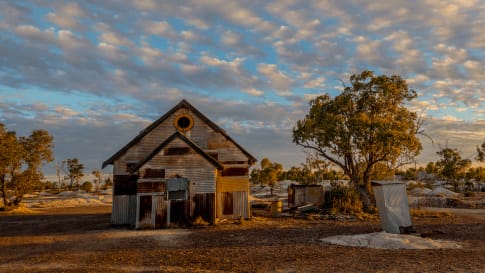
days
Mar, Apr, May, Jul, Aug +2Small group tour of outback Queensland
Visiting New South Wales, Queensland
To Dubbo and back, this small group tour takes you to learn about the Brewarrina fish traps, we travel high up into North Queensland to see the Dinosaurs of Winton and incredible Aboriginal rock art at Cathedral gorge and learn about opal mining and the history of Lightning ridge.

days
Mar, May, Aug, Sep, Oct +2Small group tour of World Heritage sites and more in the Southern States of Australia
Visiting New South Wales, South Australia
Discover the World Heritage Sites of the southern states of Australia travelling in a small group tour. A journey of learning around the southern edges of the Murray Darling basin and up to the upper southern part of this complex river basin north of Mildura. We start and end in Adelaide, stopping in Broken Hill, Mungo National Park and other significant locations.


